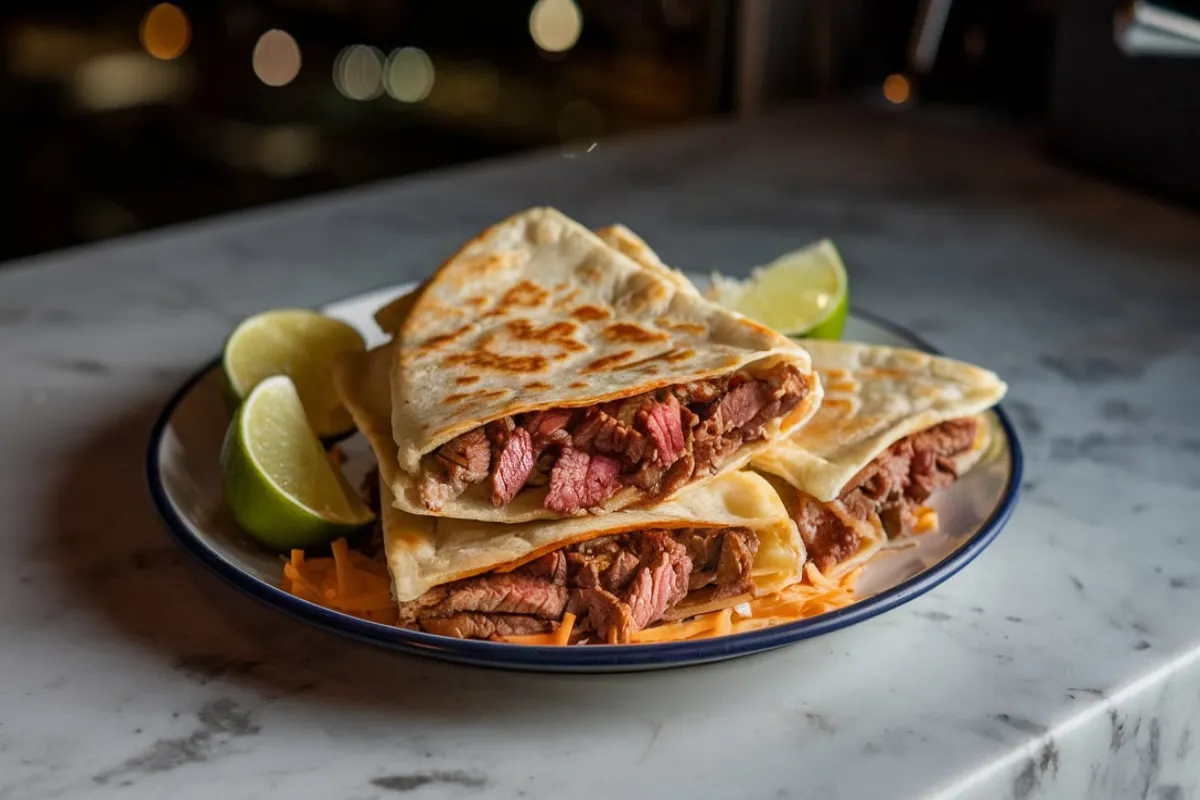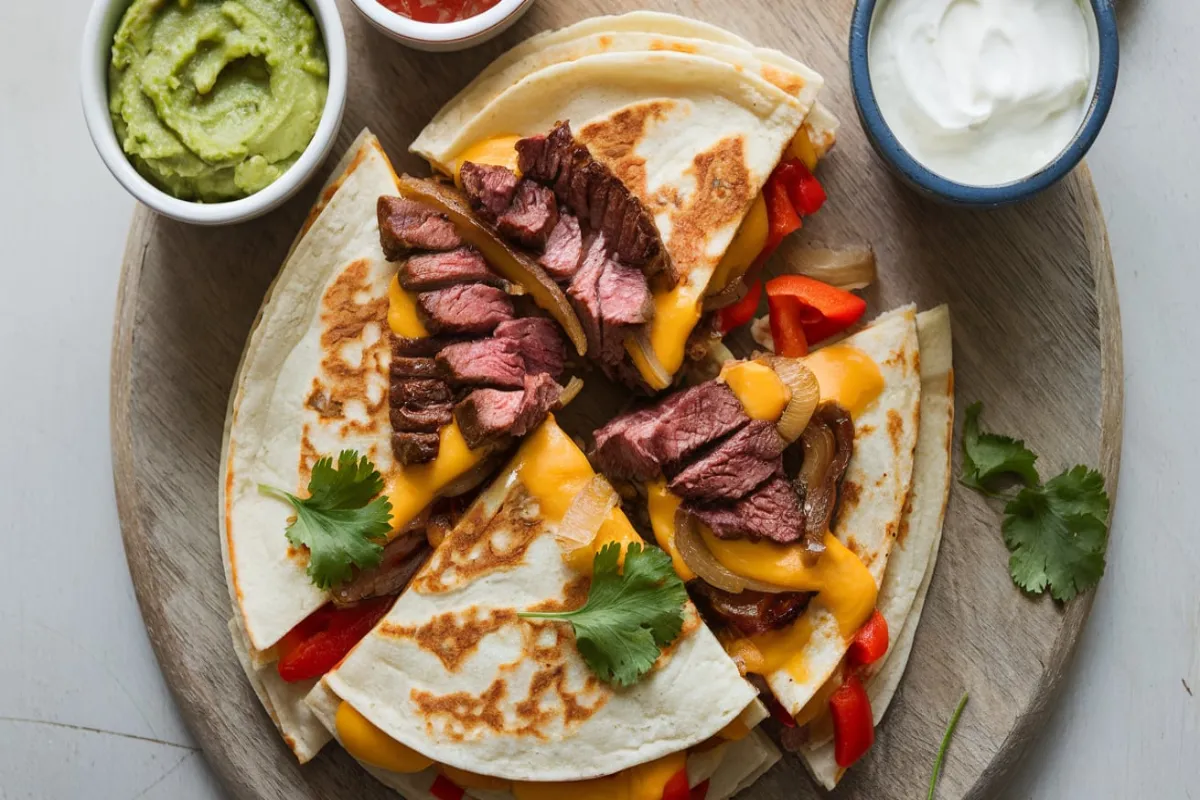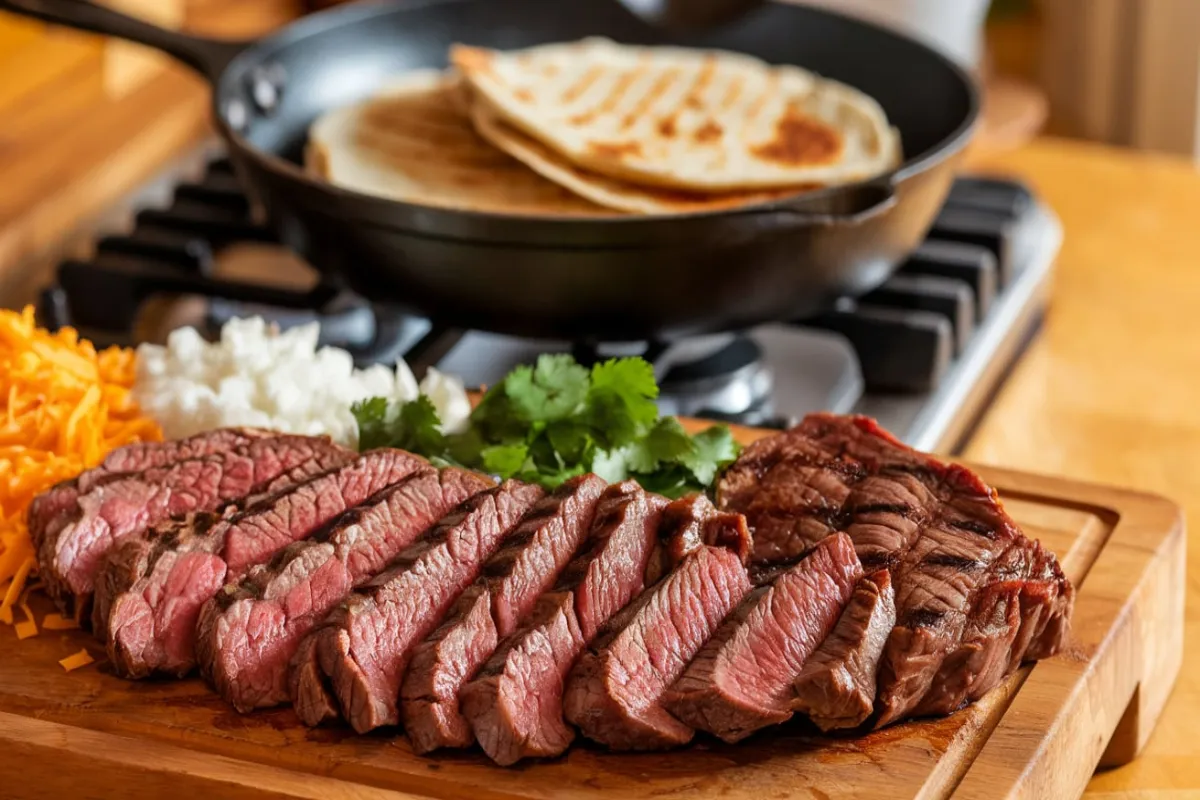When it comes to making a perfect steak quesadilla, one of the most important factors is choosing the right cut of steak. While quesadillas may seem simple, the steak’s flavor, tenderness, and texture all play a major role in transforming this classic dish into something exceptional. But what is the best cut of steak for quesadillas? In this article, we’ll explore various cuts of steak that work well for quesadillas, discuss how to cook them, and offer tips for achieving maximum flavor.
Whether you’re cooking quesadillas for a weeknight dinner or entertaining guests, understanding which steak cut to use will elevate your dish. Let’s dive into the details of what makes certain steak cuts ideal for quesadillas and how to prepare them for the best results.
Table of Contents
- Introduction
- Why the Steak Cut Matters for Quesadillas
- Best Cuts of Steak for Quesadillas
- Skirt Steak
- Flank Steak
- Sirloin Steak
- Ribeye Steak
- Filet Mignon
- How to Cook Steak for Quesadillas
- Marinate the Steak for Extra Flavor
- Use High Heat for Quick Cooking
- Let the Steak Rest Before Slicing
- Slice Thinly Against the Grain
- Tips for Assembling the Perfect Steak Quesadilla
- Use the Right Tortilla
- Choose the Right Cheese
- Layer the Ingredients Evenly
- Cook the Quesadilla on Medium Heat
- Cut and Serve with Toppings
- Frequently Asked Questions (FAQs)
- What is the most affordable steak cut for quesadillas?
- Can I use ribeye for quesadillas?
- Do I need to marinate the steak?
- What kind of cheese should I use for steak quesadillas?
- Conclusion
____________________________________________
Introduction why the Steak Cut Matters for Quesadillas
Before we get into specific steak cuts, it’s important to understand why the cut of steak you choose matters for quesadillas. Steak quesadillas rely on tender, flavorful beef that complements the cheesy, crispy tortilla. If you use a tough, chewy cut of steak, it can ruin the balance of textures in the quesadilla. Likewise, a steak that’s too dry or lacking flavor will result in a bland filling.
Choosing the right cut ensures that the steak remains tender, juicy, and packed with flavor, even after it’s sliced thinly and tucked inside the tortilla. The goal is to achieve a steak that complements the quesadilla’s creamy and crispy components without overpowering them.
Best Cuts of Steak for Quesadillas
When deciding on the best steak cut for quesadillas, you want to focus on cuts that are flavorful, tender, and cook quickly. Below are some of the top steak cuts to consider.
1. Skirt Steak
Skirt steak is one of the most popular cuts for quesadillas, and for good reason. Known for its bold, beefy flavor, skirt steak is thin and has a distinctive grain, which makes it perfect for quick cooking and slicing. Its strong flavor stands up well to the melted cheese and tortillas in a quesadilla, making it an excellent choice.
- Flavor Profile: Skirt steak has an intense, robust flavor that complements the richness of cheese and tortillas. It’s also great for marinating, which can add even more depth to your dish.
- Tenderness: While skirt steak has a more pronounced grain, it remains tender when sliced against the grain. This means cutting it perpendicular to the muscle fibers to keep it tender.
- Cooking Method: Skirt steak benefits from high-heat cooking methods, such as grilling or pan-searing. Since it’s a thin cut, it cooks quickly, typically requiring only 2-3 minutes per side for medium-rare.
2. Flank Steak
Flank steak is another popular cut for steak quesadillas. Like skirt steak, flank steak is lean and full of flavor. It’s slightly thicker than skirt steak but can still be cooked quickly and sliced thin for quesadillas. It’s also ideal for marinating, which can help tenderize the meat and infuse it with extra flavor.
- Flavor Profile: Flank steak has a bold, beefy flavor but is slightly less intense than skirt steak. It pairs well with bold spices and seasonings, making it a great canvas for quesadilla fillings.
- Tenderness: Flank steak can be a bit tougher than other cuts, but when cooked properly and sliced thinly against the grain, it becomes tender and juicy.
- Cooking Method: Flank steak is best cooked over high heat, either grilled, broiled, or pan-seared. Aim for medium-rare to medium doneness, which typically takes about 4-5 minutes per side.
3. Sirloin Steak
Sirloin steak is a tender and flavorful cut that works well for quesadillas. It’s a more affordable option compared to premium cuts like ribeye but still delivers great flavor and texture. Sirloin is leaner than some other cuts, which makes it a healthier option while still being juicy and delicious.
- Flavor Profile: Sirloin steak has a well-rounded, beefy flavor that is not as strong as skirt or flank steak but still complements the quesadilla’s other components.
- Tenderness: Sirloin is relatively tender, especially when cooked to medium-rare and sliced thinly. It’s not as fatty as other cuts, which can be a plus for those looking to avoid overly rich fillings.
- Cooking Method: Sirloin is versatile and can be cooked using various methods, including grilling, pan-searing, or broiling. Aim for medium doneness for a balance between juiciness and tenderness.
4. Ribeye Steak
Ribeye steak is known for its marbling and rich flavor, making it a luxurious option for quesadillas. While ribeye is typically associated with steakhouse dinners, it can also work for quesadillas if you’re looking to elevate the dish with a premium cut.
- Flavor Profile: Ribeye is one of the most flavorful cuts of steak, thanks to its high-fat content. This makes it incredibly juicy and rich, which can add an indulgent touch to your quesadilla.
- Tenderness: Ribeye is very tender due to its marbling. The fat melts as the steak cooks, keeping it moist and flavorful.
- Cooking Method: Ribeye is best cooked on a grill or in a cast-iron skillet to sear the outside while keeping the inside juicy. Cook to medium or medium-rare for the best results.
5. Filet Mignon
If you’re looking for the most tender cut of steak, filet mignon is the answer. While it’s not traditionally used for quesadillas, its buttery texture can make for an exceptional filling if you’re willing to splurge.
- Flavor Profile: Filet mignon has a mild flavor compared to cuts like ribeye or skirt steak. Its appeal lies in its tenderness rather than its beefiness.
- Tenderness: Filet mignon is incredibly tender, making it perfect for slicing thinly and filling quesadillas.
- Cooking Method: Since filet mignon is a lean cut, it’s best cooked using high-heat methods like grilling or pan-searing. Be careful not to overcook it, as it can become dry.

How to Cook Steak for Quesadillas
No matter which cut of steak you choose, how you cook it will determine the texture and flavor of your quesadilla filling. Here are some general cooking tips to ensure your steak comes out perfectly every time.
1. Marinate the Steak for Extra Flavor
While some cuts like ribeye are rich enough on their own, leaner cuts such as flank or skirt steak benefit from marinating. A marinade can help tenderize the meat and add layers of flavor. A basic marinade could include:
- Olive oil: Adds moisture and helps the steak cook evenly.
- Garlic: For a robust, savory flavor.
- Lime or lemon juice: Adds acidity to tenderize the meat.
- Cumin: A warm spice that complements beef and other Mexican flavors.
- Salt and pepper: Essential seasonings to enhance the steak’s natural flavor.
Let the steak marinate for at least 30 minutes or up to 24 hours for maximum flavor. After marinating, pat the steak dry to ensure a good sear when cooking.
2. Use High Heat for Quick Cooking
Steak for quesadillas should be cooked quickly at high heat to lock in juices and create a flavorful crust. Whether grilling, pan-searing, or broiling, aim for a cooking time of just a few minutes per side, depending on the thickness of your steak.
For example:
- Skirt and flank steak: Cook for 2-3 minutes per side for medium-rare.
- Sirloin: Cook for 3-4 minutes per side for medium doneness.
- Ribeye: Cook for 4-5 minutes per side for medium to medium-rare.
3. Let the Steak Rest Before Slicing
Once the steak is cooked to your desired doneness, let it rest for 5-10 minutes before slicing. Resting allows the juices to redistribute, keeping the steak tender and juicy.
4. Slice Thinly Against the Grain
After resting, slice the steak thinly against the grain. This means cutting perpendicular to the muscle fibers, which helps break down the connective tissue and ensures each bite is tender. Thin slices of steak will fold nicely into the quesadilla without making it too bulky or chewy.
Tips for Assembling the Perfect Steak Quesadilla
Now that you’ve chosen and cooked the best cut of steak for your quesadilla, it’s time to assemble the dish. Here are some tips for making sure your quesadilla is balanced, flavorful, and cooked to perfection.
1. Use the Right Tortilla
For quesadillas, flour tortillas are the most common choice because they are soft and pliable, which makes them easy to fold and cook. However, corn tortillas are also a great option if you prefer a more authentic Mexican flavor. They are smaller and slightly crispier when cooked.
2. Choose the Right Cheese
The cheese is the glue that holds the quesadilla together. Cheddar, Monterey Jack, and Oaxaca cheese are all excellent choices that melt well and complement the flavors of the steak.
3. Layer the Ingredients Evenly
When assembling your quesadilla, start with a layer of cheese on half of the tortilla. Add a layer of thinly sliced steak, then sprinkle with additional cheese to help the quesadilla stick together. You can also add extras like sautéed onions, peppers, or jalapeños for extra flavor and texture.
4. Cook the Quesadilla on Medium Heat
Heat a non-stick skillet or griddle over medium heat. Cook the quesadilla for 2-3 minutes on each side, pressing gently with a spatula to ensure the cheese melts and the tortilla crisps up. Be careful not to cook on too high of a heat, as this could cause the tortilla to burn before the cheese fully melts.
5. Cut and Serve with Toppings
Once the quesadilla is golden brown and crispy, transfer it to a cutting board and let it cool for a minute before slicing it into wedges. Serve with sides like guacamole, sour cream, and salsa for dipping.

Frequently Asked Questions (FAQs)
1. What is the most affordable steak cut for quesadillas?
Sirloin steak is one of the more affordable cuts that still delivers excellent flavor and tenderness, making it a great option for quesadillas.
2. Can I use ribeye for quesadillas?
Yes, you can use ribeye steak for quesadillas if you’re looking for a richer, more indulgent flavor. Ribeye’s marbling makes it very juicy and tender.
3. Do I need to marinate the steak?
While marinating is not always necessary, it’s a good idea for leaner cuts like flank or skirt steak. A simple marinade can enhance flavor and improve tenderness.
4. What kind of cheese should I use for steak quesadillas?
Cheddar, Monterey Jack, or Oaxaca cheese are excellent choices that melt well and complement the flavors of the steak.
Conclusion
Choosing the best cut of steak for quesadillas can make all the difference in the flavor and texture of your dish. Skirt steak and flank steak are the most popular options due to their bold flavor and quick cooking time, but sirloin, ribeye, and even filet mignon can also work well, depending on your preferences. By selecting the right cut of steak and cooking it properly, you can elevate your quesadilla to a whole new level of deliciousness. Enjoy experimenting with different cuts and flavors to find your perfect steak quesadilla!

